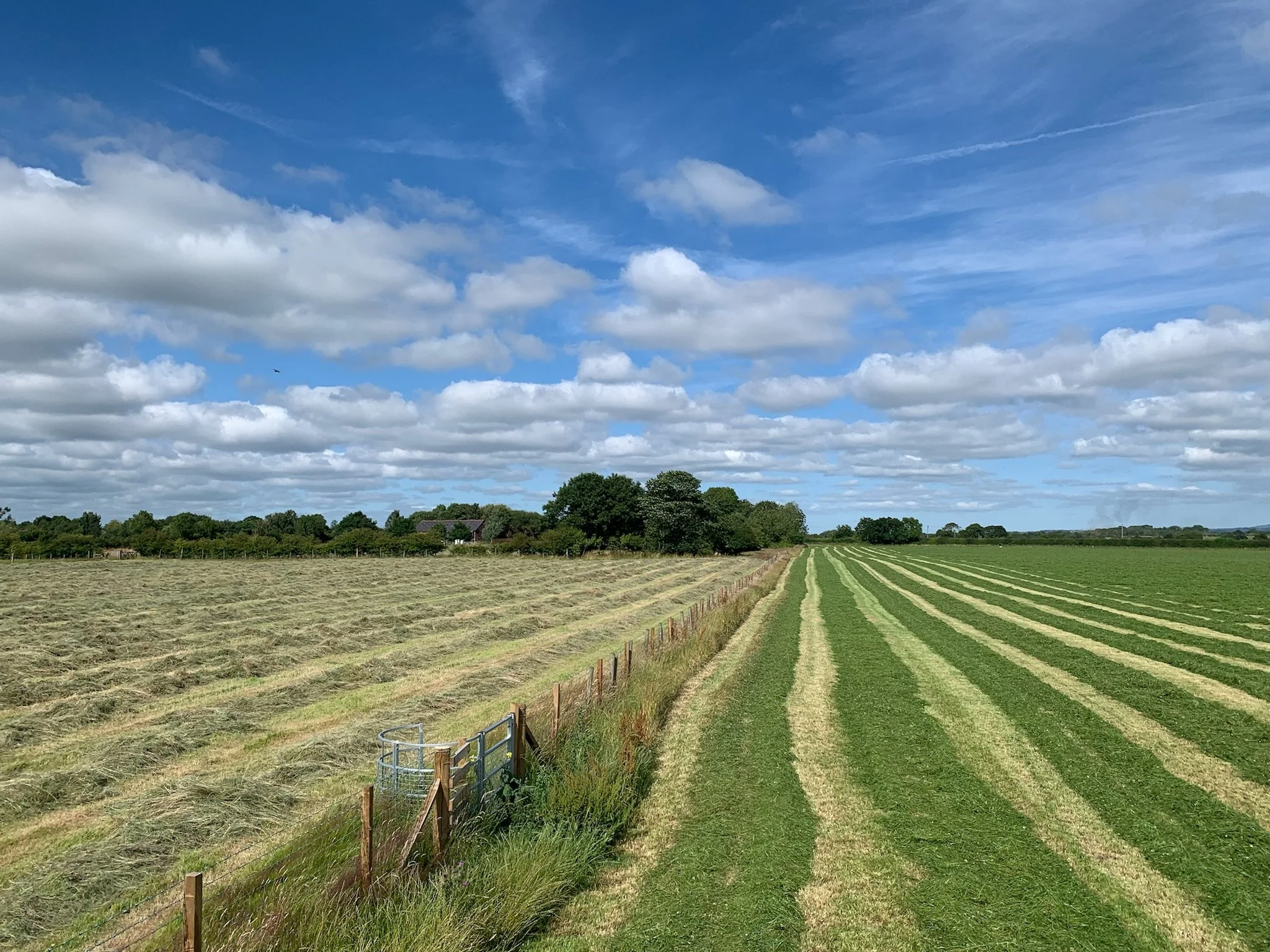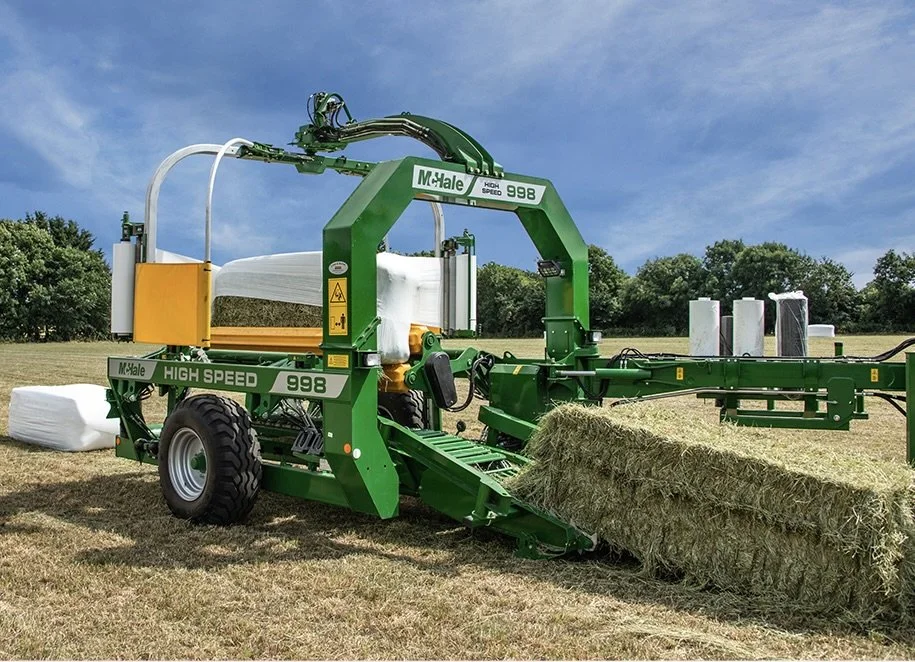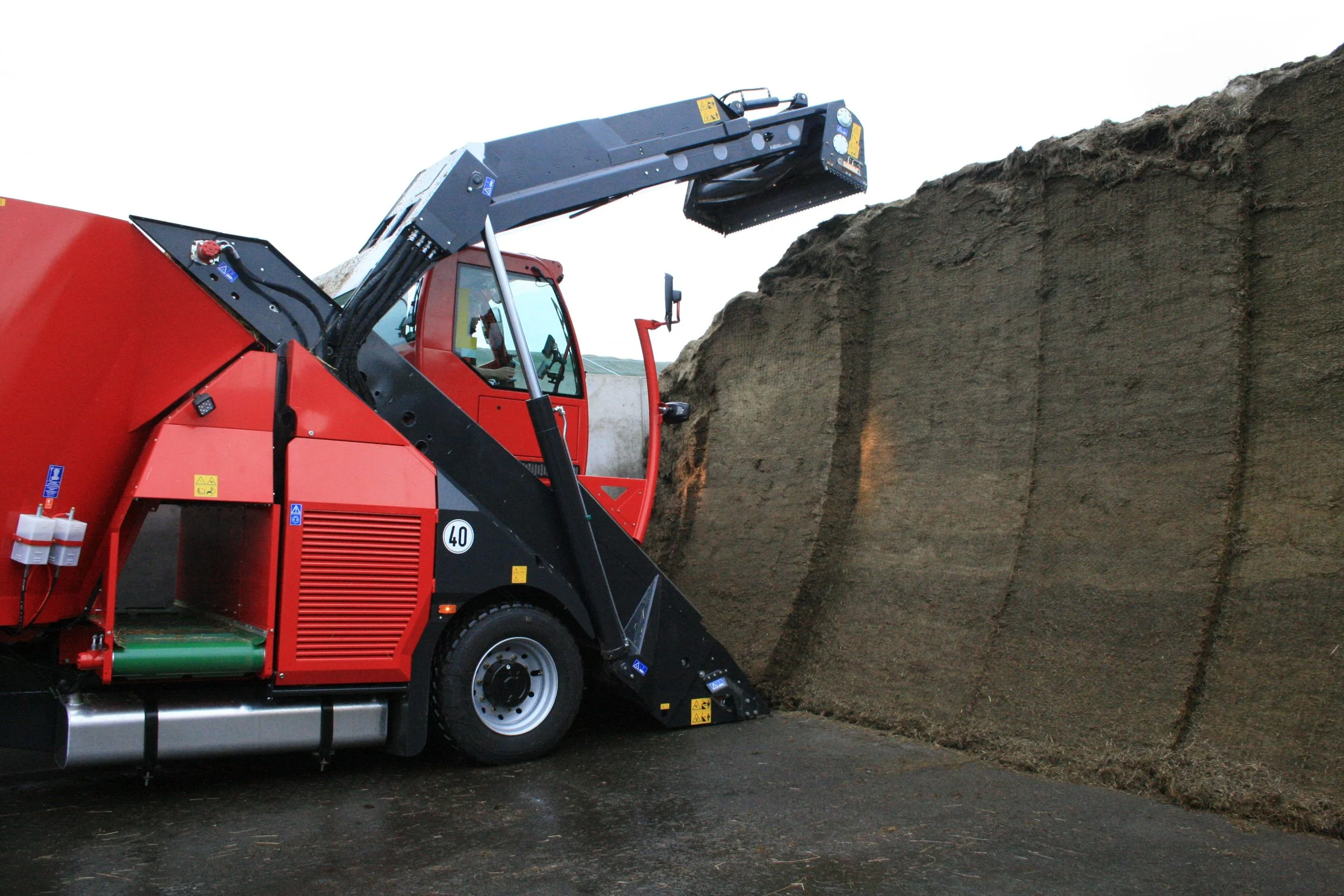Silage or haylage?
The difference between silage, haylage and hay is dry matter content. Silage is wet at 20-45% DM, haylage drier perhaps 50-75% DM and hay has to be dry, usually at least 88% dry matter, so does that put haylage in the Goldilocks zone, the best of both worlds? Maybe for some, but these differences in dry matter are the real key difference to preserving forage for later use.
How should you preserve forage?
Unless you happen to live in a part of the world that allows you to graze stock all year around, then forage preservation is at least half of your yearly feedstock. If you’re housing 365, then almost everything you feed is going to be preserved. Silage, haylage and hay all preserve forage for later use but by utilising different techniques.
Fresh forage, just like everything else in the world, is covered in micro organisms. These microbes would just love to get stuck into the tasty nutrition stored in fresh forage but these plants have evolved to resist attack. Waxy coatings and thick epidermis layers protect the plant - until it’s cut off from its roots at which point the microbe can get to work. Traditionally our farming forefathers made hay and this drying of the crop makes it almost impossible for microbes to operate because they rely on the water content to function.
Drying any crop will help to preserve it but unfortunately it’s a relatively slow process, days rather than hours when it comes to forage, and this comes at a cost. As the crop slowly dries out, the bacteria, yeasts and molds are quietly scoffing their way through the feed value meaning that the resultant hay doesn’t quite have the same feed value as the fresh grasses that were cut.
How does fermenting forage preserve more nutrients?
By making silage farmers managed to speed up the forage preservation process. The fermentation process lowers the pH in the forage so dramatically that the microbes can just no longer tolerate the conditions so they can’t scoff any more of the nutrients. This produces that stable condition that preserves the feed value but in a much quicker timeframe. Now to do this, the bacteria (because it is mostly bacterial action that matters here) are actually eating up the valuable carbohydrates in the fresh forage to produce the acid that reduces the pH. Despite all this, fermentation is still a more effective process when it comes to saving crop value for later use than hay or haylage.
Get this fermentation process right, together with all the other operations where you can lose feed value, and you can (theoretically) preserve about 92-94% of the feed value you had in the standing crop. I’m still blown away by the shear efficiency of silage fermentation. Hay losses are impossible to accurately predict because the production is a weather dependant process. Expect to preserve something between 75%-50% for the forage value; that would be a good range. And what about Goldilocks forage?
Wrapping haylage with a McHale 998
Haylage is a bit of a halfway house. It’s cut later and wilted for longer compared to silage, and although it’s drier, it is also fermented. Haylage is not dry enough to be preserved without the fermentation process, but it is also too dry to be aerobically stable once exposed to oxygen. This is why haylage shouldn’t be made/stored in a clamp. The higher dry matter means it doesn’t need such a low pH to make a stable fermentation - because it has a lower buffer capacity. So haylage is higher in dry matter, and less acidic. This can be really useful if your feeding to livestock that can’t cope with very low pH forage and it is also a more dense feed source - but I’ll come to this later.
Why is chopping forage so important?
Chopping silage is vital if you want to minimise the losses - and you do - because chopping the forage is the ultimate way to let the acid producing bacteria loose. A waxy thick impenetrable epidermis is no protection once you slice the leaves and stems open. So chopping lets the bacteria at the carbohydrates they need. The higher the dry matter, the more difficult it is for the microbes to do their stuff, so that’s one of the reasons higher dry matters need shorter chop lengths. Shorter plant sections have a much higher surface area to volume ratio, and more of that surface is unprotected cut ends.
As haylage is baled the “chop” is very rough and ready. This produces that typical high dry matter, lightly pickled forage material you’re probably familiar with. So preservation losses are almost inevitably higher with haylage than well made silage but that doesn’t mean haylage is always the poor relation.
Why is dry matter the key to forage feed value?
The density of the forage feed source is important and for more reasons than maybe initially obvious. The density I am interested in isn’t anything to do with the weight. Sure a cubic metre of clamp silage will weigh far more that a cubic meter of baled haylage; silage does have a higher bulk density, simple as that. But silage also has a lower nutrient density than some (good) haylage. So how can it be more and less?
Well this is all to do with the dry matter because the feed density, or the nutrient density, is all stored in the dry matter element of the forage and the rest is just water. A higher water content will only add weight, but will add no more nutrients. If we take a grab full of silage and weigh it, then add some water to it, the weight will then go up. Its bulk density has gone up, but its nutrient density has gone down because we still have the same nutrients spread over a, now, greater weight.
This can be confusing when you read the forage analysis because the values are given as units (grams of protein or mega joules of energy etc) per unit of dry matter. If you’re feeding livestock, then each animal will have some bulk intake limits that mean they just can’t eat more than a certain amount. Even on the way home after a night on the booze, there are still limits as to just how much kebab you can eat!
By upping the feed density for each kilo, you can provide more nutrients per mouthful. This can make a “lower value” haylage more productive than a higher value but “wet” silage.
What has haylage got to do with silage?
That’s a good question and perhaps I have got a bit sidetracked in trying to explore the dry matter of silage. For the record, I am still an advocate of silage over haylage (for most cases) but I am also very, very interested in the dry matter of the silage. The higher the dry matter the more “valuable” the silage is - probably. But that silage is also more difficult to look after and to control the losses once the clamp is opened.
It would probably be fair to say that higher dry matter silage has the potential to provide the maximum forage feed value - to get close to that 92% figure noted above. It’s also absolutely true to say that high dry matter silage needs to be managed correctly. It would also be reasonable to assume that if you’re reading this stuff, you’re probably (at the very least) interested enough to make the most of that potential.
If you want to discuss the value of the dry matter in your silage or would like to discuss any other aspects covered in this series, contact me at jeremy@silageconsultant.co.uk


